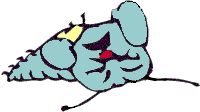
AfterDock is supposed to fire once the toolbar has settled into its new location. Most of the time, that's what happens. But in VFP 5, if you call Dock and pass the optional x and y coordinates to specify the exact docking position, AfterDock fires after the base bar has been laid down, but before the toolbar actually appears. In VFP 3, AfterDock always fires after the base bar has been laid down and before the controls appear. This bug is fixed in later versions.

